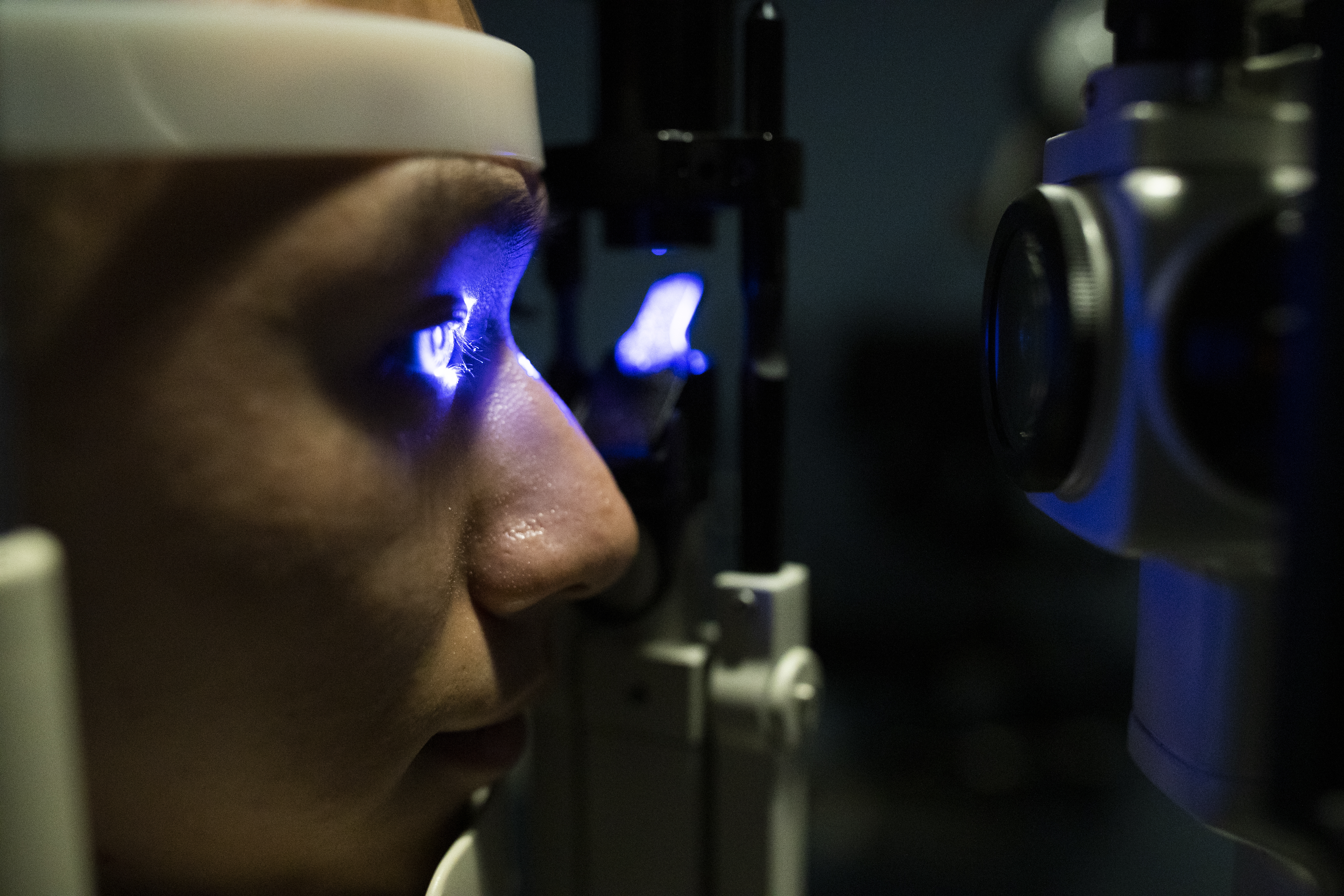Computer Vision Syndrome: Eye Care in an Online World
Over the last few decades, our lives have become more online than ever before, and it has taken a toll on our eyes. According to the American Optometric Association (AOA), the average American worker can spend seven hours per day on the computer. This constant and often uninterrupted gaze at your screen can cause a variety of unpleasant symptoms that are now referred to as Computer Vision Syndrome (CVS).
Around 70 percent of workers complain of eyestrain, according to the National Institutes of Health (NIH). There are a variety of factors that contribute to this, including lighting, glare, poor posture, uncorrected vision problems, and screen quality/resolution. These can cause the following symptoms:
- Headaches
- Eyestrain
- Blurry vision
- Dry eye
- Neck and shoulder pain
Computer Vision Syndrome is used to describe any combination of these symptoms as a result of screen use. Symptoms are typically temporary, but can recur and worsen in the future if preventative action isn’t taken. For many, regular computer and phone use is unavoidable, but there are actions that can help reduce symptoms.
Proper Vision Prescriptions: The use of proper glasses or contact lenses to correct any common eye or ocular health problems is an important start to reducing eye strain in and out of the office.
Computer eyeglasses: Aside from regular glasses, special computer glasses design
ed specifically for computer viewing may be needed to help support vision and focus the eyes at the right range for a computer screen.
Blinking: We blink far less often when looking at digital screens, which can lead to eyes becoming dry and strained. While working, make a conscious effort to blink often and even write reminders to blink, if needed.
Eye drops: Artificial tears can help keep eyes moist while working.
Frequent breaks: It’s important to take regular breaks away from the screen, even if it's just to stretch or take a short walk. This can help prevent eye strain and fatigue. One of the most popular break exercises is the “20-20-20” rule, which involves taking a break every 20 minutes to look at something 20 feet away for at least 20 seconds.

Proper lighting and glare reduction: Adjust your screen brightness to match the level of light in your working environment, and increase the screen’s contrast if possible. If the screen is much brighter or dimmer than the surrounding lighting, your eyes will have to work harder to see it. If your computer does not already have one, investing in a matte or anti-glare screen filter to get rid of screen glare can also help. In the surrounding room or office, bright windows and overhead fluorescent light can contribute to visual fatigue, and can be adjusted accordingly to be at a comfortable level.
Seating and monitor position: Adjust your monitor and seating position so that you are seated roughly 25 inches (arms length) away from the screen, and your eyes glance slightly downward at the middle of your screen (not straight ahead, or up).
These habits, combined with regular eye examinations and comprehensive vision care, can help alleviate the symptoms of Computer Vision Syndrome. If symptoms are still present, there are more direct measures that can be taken such as vision therapy. As always, the best course of action can be determined by talking to your eye doctor about your specific needs and circumstances.
If you’re struggling with CVS symptoms, contact The Eye Institute to figure out what solutions might work best for you. For an appointment, call 215.276.6111 or visit Salusuhealth.com/TEI.